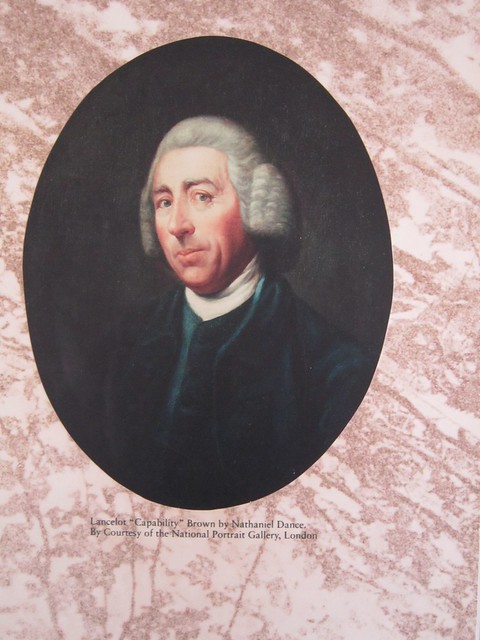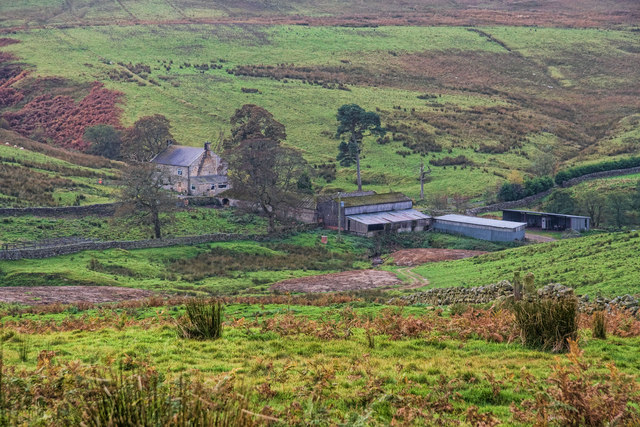Topics > People in History > Capability Brown (1716 - 1783)
Capability Brown (1716 - 1783)
Connections with North East England:
Lancelot Brown was born in the village of Kirkharle, Northumberland, and educated at Cambo School. His father was Sir William Loraine’s agent and his mother worked at Kirkharle Hall. Lancelot worked as an apprentice to the head gardener at Kirkharle Hall. His first landscape commission was for an ornamental lake at Kiddington Hall in Oxfordshire. Brown's nickname "Capability" came about from telling his clients that their property had "capability" for improvement. He worked all around England; his landscaping in the North East included gardens at Alnwick Castle, Benwell Towers, Capheaton Hall, Chillingham Park, and Wallington.His influence was so great that the contributions to the English garden made by his predecessors Charles Bridgeman and William Kent are often overlooked; even Kent's apologist Horace Walpole allowed that Kent had been followed by "a very able master".
Early life and Stowe
Lancelot Brown was born as a land agent's and chambermaid's fifth child in the village of Kirkharle, Northumberland, and educated at Cambo School until he was 16. Brown’s father had been Sir William Loraine’s land agent and his mother in service at Kirkharle Hall. His eldest brother John became the estate surveyor and later married Sir William's daughter. Elder brother George became a mason-architect.
After school Lancelot worked as the head gardener's apprentice at Sir William Loraine's kitchen garden at Kirkharle Hall till he was 23. In 1739 he journeyed south arriving at the port of Boston, Lincolnshire. Then he moved further inland where his first landscape commission was for a new lake in the park at Kiddington Hall, Oxfordshire. He moved to Wotton Underwood House, Buckinghamshire, a minor seat of Sir Richard Grenville, Lord Cobham.
In 1741, Brown joined Lord Cobham's gardening staff as undergardener at Stowe, Buckinghamshire, where he worked under William Kent, one of the founders of the new English style of landscape garden.
At the age of 26 he was officially appointed as the Head Gardener in 1742, earning £25 a year and residing at the western Boycott Pavilion. He married a Lincolnshire solicitor's daughter Bridget Wayet at Stowe in 1744 and they had six children in the following 15 years.
Brown was the head gardener at Stowe 1742-1750. He made the Grecian Valley at Stowe which, despite its name, is an abstract composition of landform and woodland. Lord Cobham let Brown take freelance commission work from his aristocratic friends, thus making him well known as a landscape gardener.
As a proponent of the new English style, Brown became immensely sought after by the landed families. By 1751, when Brown was beginning to be widely known, Horace Walpole wrote somewhat slightingly of Brown's work at Warwick Castle:
:The castle is enchanting; the view pleased me more than I can express, the River Avon tumbles down a cascade at the foot of it. It is well laid out by one Brown who has set up on a few ideas of Kent and Mr. Southcote.
By the 1760s he was earning on average £6,000 () a year, usually £500 () for one commission. As an accomplished rider he was able to work fast, taking only an hour or so on horseback to survey an estate and rough out an entire design.
In 1764 Brown was appointed King George III's Master Gardener at Hampton Court Palace, succeeding John Greening and residing at the Wilderness House.
In 1767 he bought an estate for himself at Fenstanton in Huntingdonshire from the Earl of Northampton and was appointed High Sheriff of Cambridgeshire and Huntingdonshire for 1770, although his son Lance carried out most of the duties.
Landscape gardens
It is estimated that Brown was responsible for over 170 gardens surrounding the finest country houses and estates in Britain. His work still endures at Croome Court (where he also designed the house), Blenheim Palace, Warwick Castle, Harewood House, Appuldurcombe House, Milton Abbey (and nearby Milton Abbas village), in traces at Kew Gardens and many other locations. This man who refused work in Ireland because he had not finished England was called "Capability" Brown, because he would characteristically tell his landed clients that their estates had great "capability" for landscape improvement.
His style of smooth undulating grass, which would run straight to the house, clumps, belts and scattering of trees and his serpentine lakes formed by invisibly damming small rivers, were a new style within the English landscape, a "gardenless" form of landscape gardening, which swept away almost all the remnants of previous formally patterned styles.
His landscapes were at the forefront of fashion. They were fundamentally different from what they replaced, the well-known formal gardens of England which were criticised by Alexander Pope and others from the 1710s. Starting in 1719, William Kent replaced these with more naturalistic compositions, which reached their greatest refinement in Brown's landscapes.
At Hampton Court, Brown encountered Hannah More in 1782 and she described his "grammatical" manner in her literary terms: "'Now there said he, pointing his finger, 'I make a comma, and there' pointing to another spot, 'where a more decided turn is proper, I make a colon; at another part, where an interruption is desirable to break the view, a parenthesis; now a full stop, and then I begin another subject'". Brown's patrons saw the idealised landscapes he was creating for them in terms of the Italian landscape painters they admired and collected, as Kenneth Woodbridge first observed in the landscape at Stourhead, a "Brownian" landscape (with an un-Brownian circuit walk) in which Brown himself was not involved.
Criticism
'Success breeds enmity', and perhaps Brown's sternest critic was his contemporary Uvedale Price, who likened Brown's clumped trees as resembling "regimental soldiers on parade, or so many pudding turned out of a mould". Russell Page, who began his career in the Brownian landscape of Longleat but whose own designs have formal structure, accused Brown of "encouraging his wealthy clients to tear out their splendid formal gardens and replace them with his facile compositions of grass, tree clumps and rather shapeless pools and lakes". Richard Owen Cambridge, the English poet and satirical author, declared that he hoped to die before Brown so that he could "see heaven before it was 'improved'". This was a typical statement reflecting the controversy about Brown's work, which has continued over the last 200 years. By contrast, a recent historian and author, Richard Bisgrove, described Brown's process as perfecting nature by :"judicious manipulation of its components, adding a tree here or a concealed head of water there. His art attended to the formal potential of ground, water, trees and so gave to English landscape its ideal forms. The difficulty was that less capable imitators and less sophisticated spectators did not see nature perfected... they saw simply what they took to be nature".
This deftness of touch was not unrecognised in his own day; one anonymous obituary writer opined: "Such, however, was the effect of his genius that when he was the happiest man, he will be least remembered; so closely did he copy nature that his works will be mistaken". Sir William Chambers, who considered himself a garden authority as well, complained that Brown's grounds "differ very little from common fields, so closely is nature copied in most of them".
Architecture
Capability Brown's essays in the field of architecture were a natural outgrowth of his unified picture of the English country house in its setting:
"In Brown's hands the house, which before had dominated the estate, became an integral part of a carefully composed landscape intended to be seen through the eye of a painter, and its design could not be divorced from that of the garden"
Humphry Repton observed that Brown "fancied himself an architect", but Brown's work as an architect is overshadowed by his great reputation as a designer of landscapes. Repton was bound to add: "he was inferior to none in what related to the comfort, convenience, taste and propriety of design, in the several mansions and other buildings which he planned".
Brown's first country house project was the remodelling of Croome Court, Worcestershire, (1751–52) for the 6th Earl of Coventry, in which instance he was likely following sketches by the gentleman amateur Sanderson Miller. Fisherwick, Staffordshire, Redgrave Hall, Suffolk, and Claremont, Surrey, were classical, while at Corsham his outbuildings are in a Gothick vein. Gothick stable blocks and decorative outbuildings, arches and garden features constituted many of his designs. From 1771 he was assisted in the technical aspects by the master builder Henry Holland, and by Henry's son Henry Holland the architect, whose initial career Brown supported; the younger Holland was increasingly Brown's full collaborator and became Brown's son-in-law in 1773.
Subsequent reputation
Brown's reputation declined rapidly after his death, because the English Landscape style did not convey the dramatic conflict and awesome power of wild nature. A reaction against the harmony and calmness of Brown's landscapes was inevitable; the landscapes lacked the sublime thrill which members of the Romantic generation (such as Richard Payne Knight and Uvedale Price) looked for in their ideal landscape, where the painterly inspiration would come from Salvator Rosa rather than Claude Lorrain.
During the 19th century he was widely criticised, but during the twentieth century his reputation rose again. Tom Turner has suggested that the latter resulted from a favourable account of his talent in Marie-Luise Gothein's History of Garden Art which predated Christopher Hussey's positive account of Brown in The Picturesque (1927).
Dorothy Stroud wrote the first full monograph on Capability Brown, fleshing out the generic attributions with documentation from country house estate offices. Later landscape architects like William Gilpin would opine that Brown's 'natural curves' were as artificial as the straight lines that were common in French gardens.
Brown died in 1783, in Hertford Street, London, on the doorstep of his daughter Bridget, who had married the architect Henry Holland. Brown sent two of his sons to Eton. One of them, Lancelot Brown the younger, became the MP for Huntingdon.
Horace Walpole wrote to Lady Ossory: "Your dryads must go into black gloves, Madam, their father-in-law, Lady Nature’s second husband, is dead!". Brown was buried in the churchyard of St. Peter and St. Paul, the parish church of Brown's small estate at Fenstanton Manor.
Brown's portrait by Nathaniel Dance, c. 1773, is conserved in the National Portrait Gallery, London.
His work has often been favourably compared and contrasted ("the antithesis") to the œuvre of André Le Nôtre, the French jardin à la française landscape architect. He became both "rich and honoured and had 'improved' a greater acreage of ground than any landscape architect" who preceded him.
Gardens and parks
Many of Capability Brown's parks and gardens may still be visited today. A partial list of the landscapes he designed or worked on:
More than 30 of the gardens are open to the public.
- Adderbury House, Oxfordshire (designs not thought to be implemented)[22]
- Addington Place, Croydon
- Alnwick Castle, Northumberland
- Althorp, Northamptonshire
- Ampthill Park, Ampthill, Bedfordshire
- Ancaster House, Richmond, Surrey
- Appuldurcombe House, Isle of Wight
- Ashburnham Place, East Sussex
- Ashridge House, Hertfordshire
- Aske Hall, North Yorkshire
- Astrop Park, Northamptonshire
- Audley End, Essex
- Aynhoe Park, Northamptonshire
- The Backs, Cambridge
- Badminton House, Gloucestershire
- Basildon Park, Berkshire
- Battle Abbey, East Sussex
- Beaudesert, Staffordshire
- Beechwood, Bedfordshire
- Belhus, Essex
- Belvoir Castle, Leicestershire
- Benham, Berkshire
- Benwell Tower, near Newcastle upon Tyne
- Berrington Hall, Herefordshire
- Blenheim Palace, Oxfordshire
- Boarstall, Buckinghamshire (unknown if work carried out)[23]
- Bowood House, Wiltshire
- Branches Park, Cowlinge, Suffolk
- Brentford, Ealing
- Brightling Park, Sussex
- Broadlands, Hampshire
- Brocklesby Park, Lincolnshire
- Burghley House, Lincolnshire
- Burton Constable Hall, East Riding of Yorkshire
- Burton Park, Sussex
- Burton Pynsent, Somerset
- Byram, West Yorkshire
- Cadland, Hampshire
- Capheaton Hall, Northumberland
- Cardiff Castle, Cardiff
- Castle Ashby House, Northamptonshire[24]
- Caversham, Berkshire
- Chalfont House, Buckinghamshire
- Charlecote, Warwickshire
- Charlton, Wiltshire
- Chatsworth, Derbyshire
- Chilham Castle, Kent
- Chillington Hall, West Midlands
- Church Stretton Old Rectory, Shropshire
- Clandon Park, Surrey
- Claremont, Surrey
- Clumber Park, Nottinghamshire
- Compton Verney, Warwickshire
- Coombe Abbey, Coventry
- Corsham Court, Wiltshire
- Croome Park, Worcestershire
- Dodington Park, Gloucestershire
- Danson Park, Bexley Borough of London
- Darley Abbey Park, Derby
- Euston Hall, Suffolk
- Farnborough Hall, Warwickshire
- Fawley Court, Oxfordshire
- Gatton Park, Surrey
- Grimsthorpe Castle, Lincolnshire
- Hampton Court Palace, Surrey[6]
- Harewood House, Leeds
- Heveningham Hall, Suffolk
- Highclere Castle, Hampshire
- Highcliffe Castle, Dorset
- Himley Hall, Staffordshire
- Holkham Hall, Norfolk
- Holland Park, London
- The Hoo, Hertfordshire
- Hornby Castle, North Yorkshire
- Howsham, near York
- Ickworth, Suffolk
- Ingestre, Staffordshire
- Ingress Abbey, Kent
- Kelston, Somerset
- Kew Gardens, South West London[9]
- Kiddington Hall, Oxfordshire
- Kimberley, Norfolk
- Kimbolton Castle, Cambridgeshire
- King's Weston House, Bristol
- Kirkharle, Northumberland
- Kirtlington, Oxfordshire
- Knowsley, near Liverpool
- Kyre Park, Herefordshire
- Lacock Abbey, Wiltshire
- Laleham Abbey, Surrey
- Langley, Berkshire
- Langley Park, Norfolk
- Latimer, Buckinghamshire
- Leeds Abbey, Kent
- Littlegrove, Barnet, London
- Lleweni Hall, Clwyd
- Longford Castle, Wiltshire
- Longleat, Wiltshire
- Lowther, Cumbria
- Luton Hoo, Bedfordshire
- Madingley Hall, Cambridgeshire
- Maiden Earley, Berkshire
- Mamhead, Devon
- Melton Constable Hall, Norfolk
- Milton Abbey, Dorset
- Moccas Court, Herefordshire
- Moor Park, Rickmansworth, Hertfordshire
- Mount Clare, Roehampton, South West London
- Navestock, Essex
- Newnham Paddox, Warwickshire
- Newton Park, Newton St Loe, Somerset
- New Wardour Castle, Wiltshire
- North Cray Place, near Sidcup, Bexley, London
- North Stoneham Park, Eastleigh, Hampshire
- Nuneham Courtenay, Oxfordshire
- Oakley, Shropshire
- Packington Park, Warwickshire
- Paddenswick Manor, West London
- Patshull Hall, Staffordshire
- Paultons Park, Hampshire
- Peper Harow, Surrey
- Peterborough House, Hammersmith, London
- Petworth House, West Sussex
- Pishiobury, Hertfordshire
- Porter's Park, Hertfordshire
- Prior Park, Somerset
- Ragley Hall, Warwickshire
- Redgrave Park, Suffolk
- Roche Abbey, South Yorkshire
- Sandleford, Berkshire
- Savernake Forest, Wiltshire
- Schloss Richmond (Richmond Palace) in Braunschweig, Germany
- Scampston Hall, North Yorkshire
- Sheffield Park Garden, Sussex
- Sherborne Castle, Dorset
- Sledmere House, East Riding of Yorkshire
- Southill Park, Bedfordshire
- South Stoneham House, Southampton, Hampshire
- Stoke Park, Buckinghamshire
- Stowe Landscape Garden
- Syon House, West London
- Temple Newsam, Leeds
- Thorndon Hall, Essex
- Trentham Gardens, Staffordshire
- Ugbrooke Park, Devon
- Wallington, Northumberland[25]
- Warwick Castle, Warwick
- Wentworth Castle, South Yorkshire
- West Hill, Putney, South London
- Weston Park, Staffordshire
- Whitehall, London
- Whitley Beaumont, West Yorkshire
- Widdicombe, near Slapton, Devon
- Wimbledon House, South West London
- Wimbledon Park, South West London
- Wimpole Hall, Cambridgeshire
- Woburn Abbey, Bedfordshire
- Wolterton Hall, Norfolk
- Woodchester, Gloucestershire
- Woodside, Berkshire
- Wootton Place Rectory, Oxfordshire
- Wotton, Buckinghamshire
- Wrest Park, Bedfordshire
- Wrotham Park, Hertfordshire
- Wycombe Abbey, Buckinghamshire
- Wynnstay, Clwyd, Wales
- Youngsbury, Hertfordshire
Visit the page: Capability Brown for references and further details. You can contribute to this article on Wikipedia.

from https://commons.wikimedia.org…
Lancelot ('Capability') Brown, by Nathaniel Dance
- Image c/o Wikimedia. "This work is in the public domain in its country of origin and other countries and areas where the copyright term is the author's life plus 100 …
Added by
Simon Cotterill
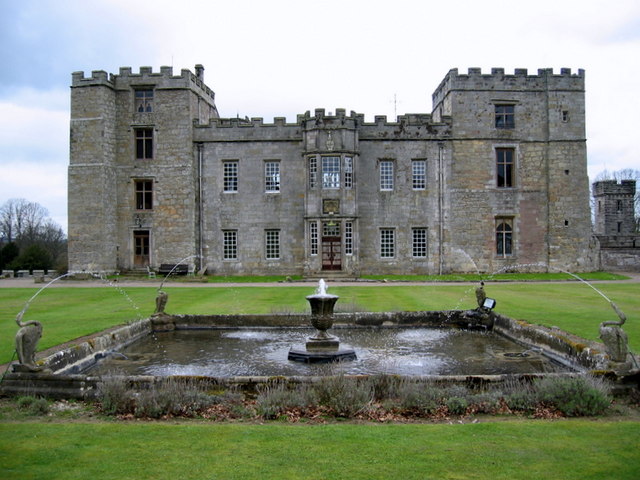
Co-Curate Page
Chillingham Castle
- Overview About Chillingham Castle Map Street View Chillingham Castle is a medieval fortress in the village of Chillingham in England's north Northumberland. From the late 1200s Chillingham was the …
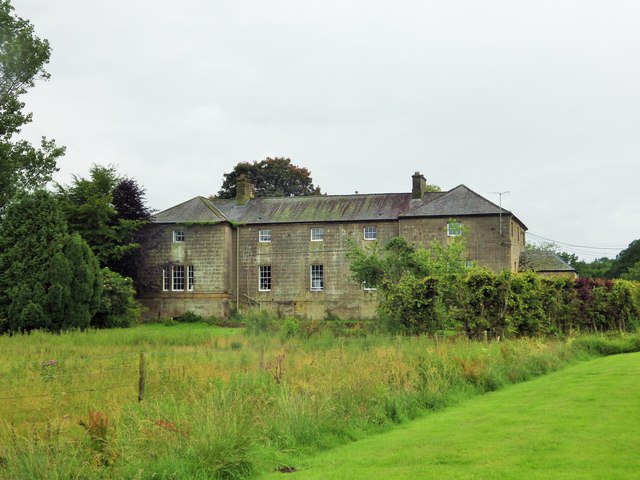
Co-Curate Page
Kirkharle Hall
- Overview About Kirkharle Hall Map Street View Kirkharle Farm is the surviving east wing of Kirkharle Hall (initially built in c 1718, added to c 1755, and then partially demolished …
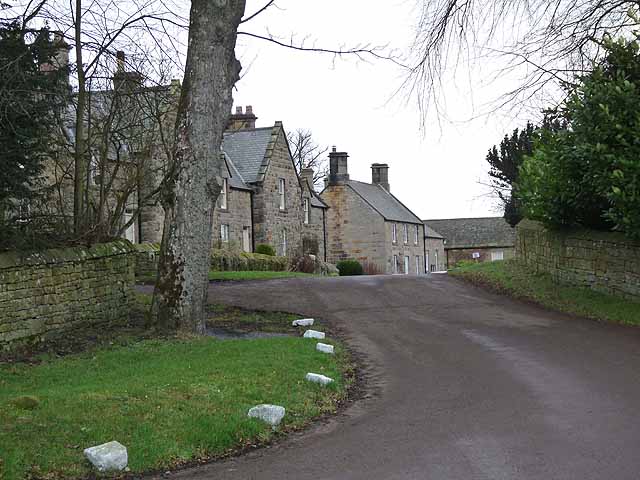
Co-Curate Page
Cambo
- Overview About Cambo Map Street View Cambo is a village in Northumberland located about 11 miles to the west of Morpeth. It is part of Wallington Estate, maintained by the …
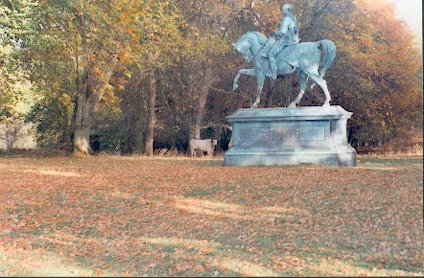
Co-Curate Page
Chillingham Park
- Chillingham Park, the extensive grounds of Chillingham Castle, was designed by Capability Brown in 1752. It includes ornamental oak woodlands set amongst grassland (wood pasture), modelled on how Britain was …

Co-Curate Page
Wallington
- Overview About Wallington Map Street View Wallington is a country house and gardens located about 12 miles (19 km) west of Morpeth, Northumberland, England, near the village of Cambo. It …
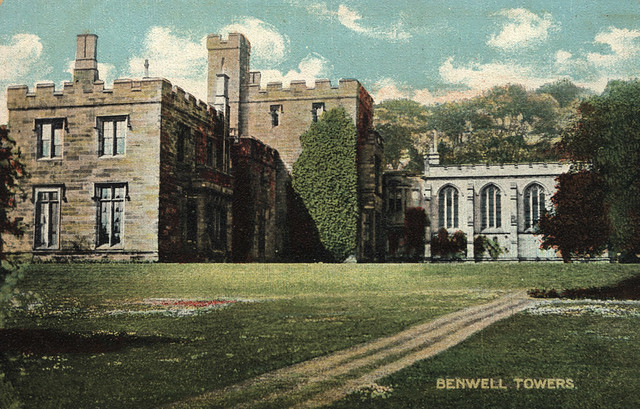
Co-Curate Page
Benwell Towers
- Overview Map Benwell Towers is a large house in Benwell, Newcastle. It was built in 1831, designed by John Dobson for Thomas Crawhall. A chapel was added in 1887. The …
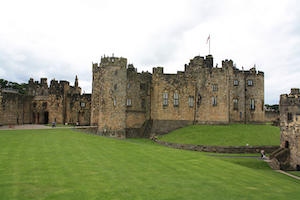
Co-Curate Page
Alnwick Castle
- Overview History Map Street View Alnwick Castle is the seat of the Duke of Northumberland, built by the River Aln in Alnwick following the Norman conquest. The castle is open …
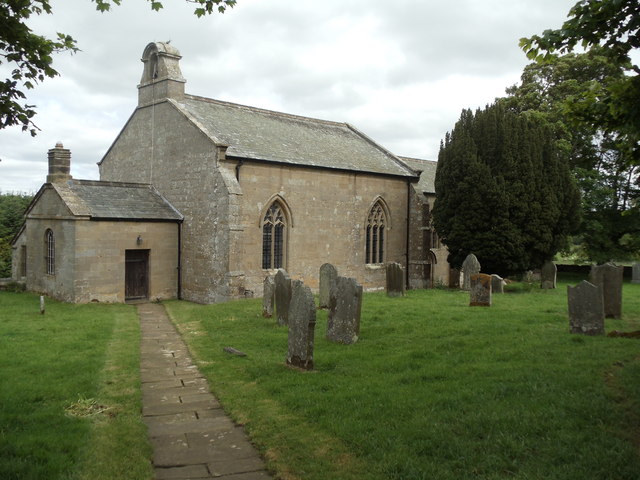
Co-Curate Page
Kirkharle
- Overview About Kirkharle Map Street View Kirkharle is a small village in Northumberland, located a mile and a half SW of Wallington and 2 miles SE of Kirkwhelpington. In medieval times it …


from https://commons.wikimedia.org…
Lancelot ('Capability') Brown, by Nathaniel Dance
- Image c/o Wikimedia. "This work is in the public domain in its country of origin and other countries and areas where the copyright term is the author's life plus 100 …
Added by
Simon Cotterill

Co-Curate Page
Chillingham Castle
- Overview About Chillingham Castle Map Street View Chillingham Castle is a medieval fortress in the village of Chillingham in England's north Northumberland. From the late 1200s Chillingham was the …

Co-Curate Page
Kirkharle Hall
- Overview About Kirkharle Hall Map Street View Kirkharle Farm is the surviving east wing of Kirkharle Hall (initially built in c 1718, added to c 1755, and then partially demolished …

Co-Curate Page
Cambo
- Overview About Cambo Map Street View Cambo is a village in Northumberland located about 11 miles to the west of Morpeth. It is part of Wallington Estate, maintained by the …

Co-Curate Page
Chillingham Park
- Chillingham Park, the extensive grounds of Chillingham Castle, was designed by Capability Brown in 1752. It includes ornamental oak woodlands set amongst grassland (wood pasture), modelled on how Britain was …

Co-Curate Page
Wallington
- Overview About Wallington Map Street View Wallington is a country house and gardens located about 12 miles (19 km) west of Morpeth, Northumberland, England, near the village of Cambo. It …

Co-Curate Page
Benwell Towers
- Overview Map Benwell Towers is a large house in Benwell, Newcastle. It was built in 1831, designed by John Dobson for Thomas Crawhall. A chapel was added in 1887. The …

Co-Curate Page
Alnwick Castle
- Overview History Map Street View Alnwick Castle is the seat of the Duke of Northumberland, built by the River Aln in Alnwick following the Norman conquest. The castle is open …

